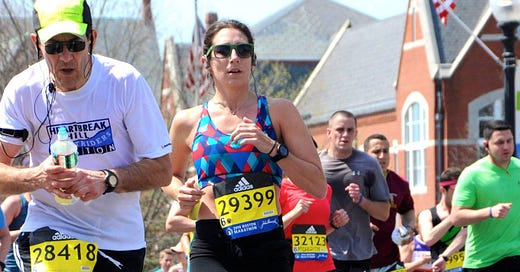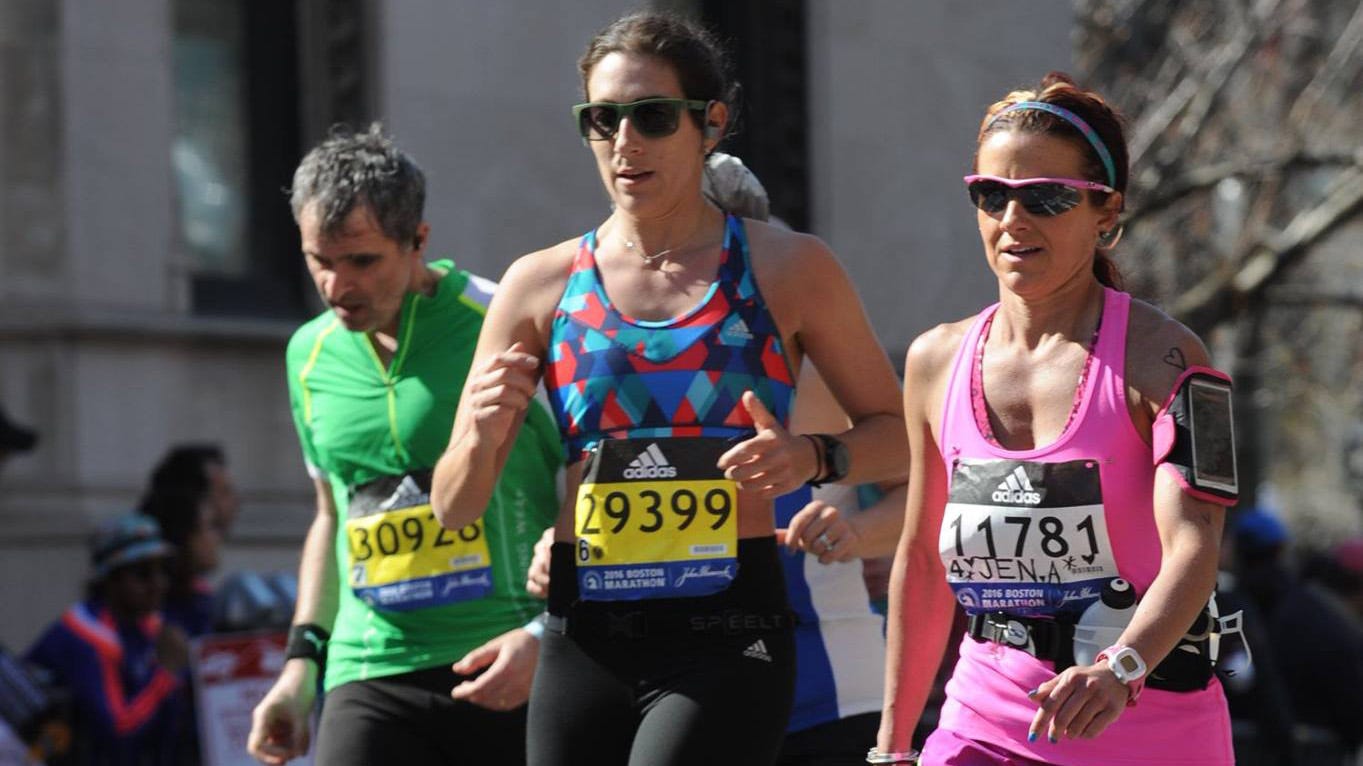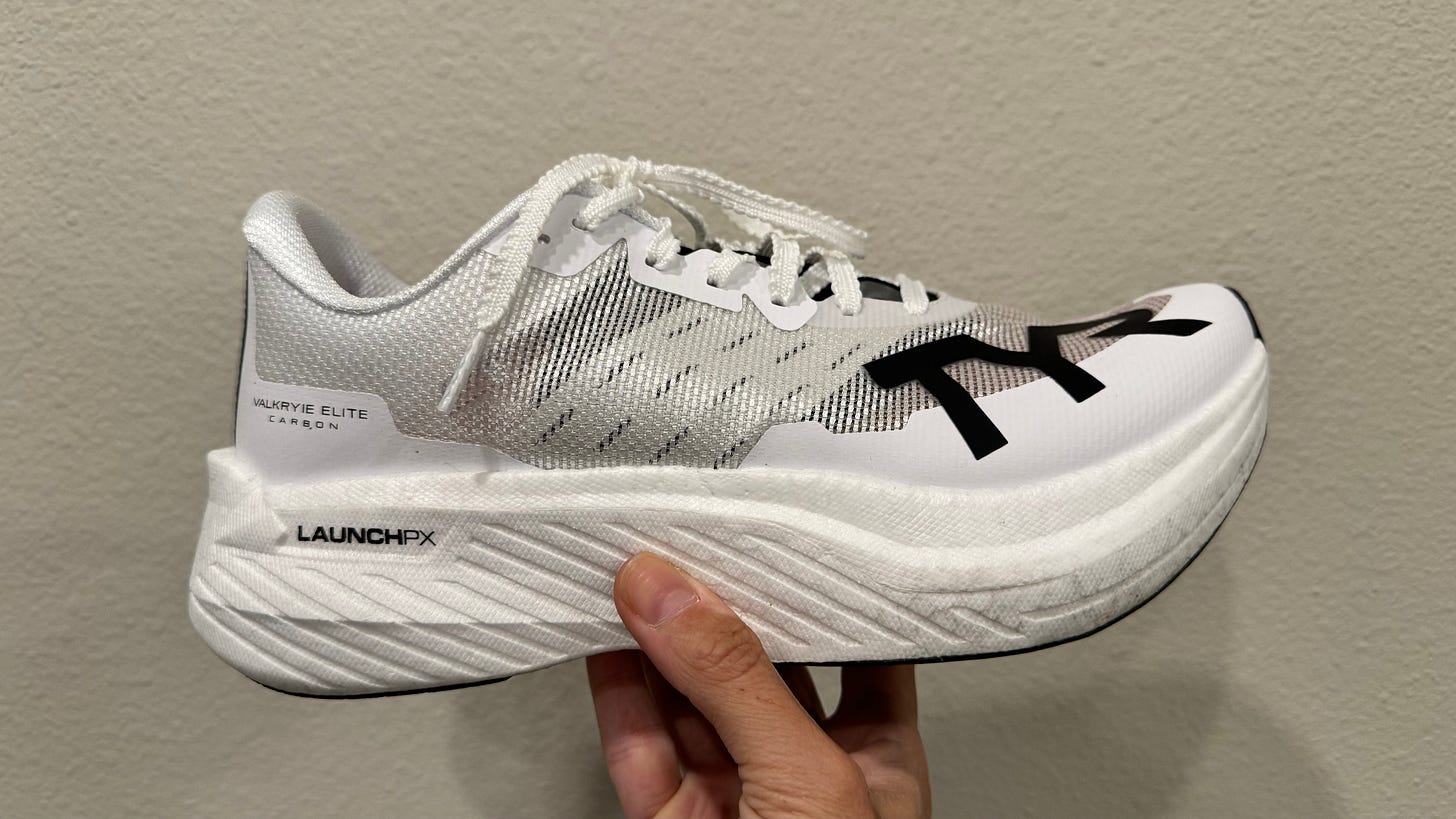The Real Issue With the Boston Marathon Cutoff Time
It’s not the six-hour limit, it’s the lack of clarity around it—and the condescension from other runners.
For many runners, crossing the Boston Marathon finish line is the culmination of a long-term dream—one that, regardless of whether you got there with a qualifying time or because you raised thousands of dollars for charity, required a not-insignificant amount of discipline, sacrifice, and self-belief.
But crossing that iconic finish line ended in heartbreak for a number of runners this year. In the immediate aftermath of the race, Hector Espinal eloquently summed up his experience on Instagram: “Although I did not qualify I dreamt of being accepted to the small but mighty group of Boston Marathon finishers. … Despite crossing the finish line, finishing the race and receiving my medals, this morning I was informed that I did not complete the Boston Marathon in the time allotted to be considered an official finisher and @wmmajors 6 Star Marathoner. As my dream slowly turns into a nightmare, I’m happy to have dreamt and failed then to have never have dreamt at all.”
Espinal wasn’t the only finisher to confront this “nightmare” scenario. Nearly 500 people appeared to have crossed the Boston finish line this year after it officially closed, a BAA spokesman told Runner’s World, in a poignant article on the cutoff controversy written by Sarah Lorge Butler.
Cutoffs are important. Races put significant stress on the host town or city, and the race organizers must decide on a finite amount of time as to how long they require the roads to be shut down, in addition to how many hours they need to staff the event. Extending the duration of a race isn't always possible, and the costs for traffic control, police, security, medical all scale upwards when people are out for longer, as I wrote about in a recent article for Well + Good about why banditing is so bad.
The Chicago Marathon has a course time limit of 6 hours and 30 minutes; runners must maintain a 15-minute per mile pace or faster, completing the full marathon distance—start line to finish line—within the event time requirement. At the New York City Marathon, sweep buses follow the marathon route at a 6:30 marathon pace, after the final wave start, which is 11:30 a.m; the official end time of the race is 8:00pm.
No one’s arguing with the fact that there is a cutoff for Boston. The problem is how the race communicates and enforces that cutoff. The Boston Marathon website says “athletes have six hours from the time the last started cross [sic] the start line to complete the course.” It goes on to say, “Those unable to complete the entire Boston Marathon course within the period of time in which official race times are recorded (six hours from the time the last official starter in the fourth wave crosses the start line), you will not be recorded in the official race results.”
But the Boston Marathon runners don’t know the exact time the last starter crosses the starting line. In 2024, the final starter crossed the line at 11:28 a.m., so runners needed to finish by 5:28 p.m. to be considered official. But what if you started at 11:15 a.m., the official start of wave four, or even at the back of wave three? It’s not as simple as saying “you have six hours to finish the race;” in 2024, the last official finisher crossed the finish line in around seven hour and 11 minutes; that means they started in an earlier wave, and had plenty of buffer to beat that last starter.
If you’re not the last starter, how are you supposed to know when that clock started? The BAA says there was a car with flashing lights on the top, a “road reopening vehicle,” going at six-hour pace and alerting runners if they were falling behind, but numerous runners who finished after the official cut-off reported to Runner’s World that they never saw the car—or that they finished in front of it.
This kind of moving goal post puts an unfair onus on back of the pack runners, who tend to start later and are on the course for longer—which often puts them at the mercy of the worst conditions of the day (in Boston this year, the temperature at the start was 56°F, but it reached a high of 67°F later in the day, with 72 percent humidity). As Lorge Butler points out, “the moving cutoff appears to affect more women than men, older runners more than younger ones, and many runners of color.”
It’s not that these runners want to remove or extend the cutoff, it’s that they want it to be more transparent. Berlin, for example, has a finish time limit of 6 hours 15 minutes. But they also have cut-off points: Runners must pass kilometer 33 by 3:50 p.m. and kilometer 38 at 4:35 p.m.; those who don’t must leave the official course. The Tokyo Marathon, which has a 7-hour time limit, has eight cutoff points before the finish with clearly noted times (for example, 20.9K by 12:45, and 33.5K by 14:35). If Boston is determined to not use cutoffs, one example to look to may be the runDisney races: These races have balloon ladies who start last, and run a 16-minute pace to meet the cutoff; as long as you’re in front of them (and you’ll see them, with their big balloons), you’re good to go.
What’s more upsetting to me than the actual timing controversy is the way some runners have responded to it. The comment section of Runner’s World’s Instagram post for their article is full of trolls saying things like “If you can’t run a marathon in less than 6 hours you may as-well not enter” or “Well, if you cannot run a marathon in 5h stay home and train more.” I’ve seen these kinds of comments littered across Twitter and Threads as well.
This is one of the most toxic mentalities in running. Frankly, I think it’s delusional for other runners to demean someone else’s achievements—and make no mistake, completing the marathon distance is an achievement, no matter how long it takes you. Implying that someone who can’t run a certain pace needs to “stay home and train more” is giving Tracksmith BQ singlet vibes; remember the controversy over the Instagram post claiming “The BQ … represents the culmination of thousands of lonely miles; months of waking up in the darkness to get the workout done; and the defeat of the fear that they were chasing an impossible dream,” as if runners who don’t qualify for Boston don’t know those feelings?
Another commenter wrote, “It’s a race, not a walk in the park. It’s not toxic, it’s not demeaning, it’s simply the purpose of the event. I’m frankly sick and tired of the culture of elevating laziness and punishing discipline.” How dare this random person on the internet imply that anyone running a marathon is “lazy”—lazy people don’t run marathons, and I would argue it takes even more discipline to train yourself to be on your feet for longer.
Yes, Boston is an “elite” race to a certain extent; about 80 percent of the field has to run a qualifying time to be there. But the other 20 percent of the field is mostly made up of charity runners—runners who have to fundraise a minimum of $5,000, and who collectively raised $40.3 million in 2023 (the 2024 numbers aren’t available yet). It feels a little gross on the part of the race organizers and sponsors to deny an official finish time to those runners while taking their registration and fundraising money but not providing transparency around the cutoff time (this is especially egregious for those runners, like Espinal, who are seeking their Six Star medal).
The condescension from faster runners is also pretty disheartening. “We live in an extremely entitled generation,” a commenter wrote on the Runner’s World post. “They want big achievements without meeting the standards. ‘I want a medal in one of the most prestigious marathons, but without the standards/requirements for it’.” Is it really that these runners don’t want to meet the requirements, or are they asking for clear and transparent parameters around those requirements? If you can’t understand that people are asking for the latter versus the former, and you’re judging them solely based on the fact that they’re slower than you, you should probably keep your elitist opinions to yourself.
What feels entitled to me is this belief that certain runners should be shut out of or don’t deserve an experience because of variables outside of their control. Remember: The average marathon time was 4:14:29 for men and 4:42:09 for women in 2023. Faster is not synonymous with better. Slower is not less than. Attaching value judgements to someone’s race time is divisive and brings down the community as a whole. At the end of the day, we’re all running the same distance. Obviously, Boston is skewed towards a faster field, but that doesn’t mean slower runners can’t participate. They’re not “stealing spots” from faster runners, they are entitled to enter in whatever capacity a race allows them to—their money has the same value, they train just as hard to get to the starting line, and they experience the same emotions as faster runners. And those slower runners deserve not just a fair race experience—one that has a time limit that’s easy to track and understand—but respect from the larger running community.
the rundown
TYR Valkyrie Elite Carbon
I’ve always thought of TYR as a swim brand, which means I never really think of the brand, but they’ve attracted my attention with their new running shoes. The TYR Valkyrie Elite Carbon is a carbon-plated racing shoe with 39.5 millimeters of Pebax foam, a 6-millimeter drop, and a mesh upper—and I was totally surprised by how much I liked this. My track workouts in the Valkyrie felt super smooth; the exaggerated rocker gently tipped me into each stride, and the carbon plate added plenty of propulsion while stabilizing the soft, responsive foam. I liked the roomier forefoot and wider platform, which also helped with stability without sacrificing speed. These also look sleek as hell—every time I wore them, I’d have runners coming up asking what are those? I could see these doing really well in the triathlon community, but runners shouldn’t sleep on them, either.
You Should Be Taking a Probiotic
Probiotics are a type of live bacteria that have beneficial effects on your body (you can find them in foods like yogurt, kombucha, kimchi, and tempeh, but also in supplement form). In addition to optimising your gut microbiome, they also have the potential to improve performance and control gastrointestinal symptoms. In a small new study published in the Journal of Exercise Science and Fitness, marathon runners who received a probiotic for 5 weeks showed a significant increase in aerobic performance, improvement in gastrointestinal symptoms, and boost in beneficial gut bacteria, as well as a decrease in detrimental gut bacteria compared to the placebo group. Time to get back on the probiotic bandwagon!
Garmin Forerunner 165
The Forerunner line is one of the most ubiquitous among runners, and the Forerunner 165 is the latest addition. This watch isn’t the first of its line to use a bright AMOLED screen, but it is the most affordable—it rings up at $250. I’d call it a solid competitor to the Coros Pace 3 (it weighs just 39 grams), but the AMOLED screen does sap some of the battery life: It lasts up to 11 days of battery life in smartwatch mode and up to 19 hours in GPS mode. The Forerunner 165 still has all of Garmin’s signature health, fitness and connected features, including race adaptive training plans, wrist-based running power and dynamics and more, but you won’t get some of the bells and whistles more expensive models offer (Training Readiness score, Hill and Endurance scores). TBH, most runners don’t need all that data. I found this watch to be easy to use, sync fast on the run, and comfortable to wear 24/7—all at a great value.









It’s a really bad system and apart from not being transparent, it’s going to lead to people putting faster than is realistic predicted finishing times down to try to get into an earlier wave. We’ve had a similar level of toxicity around the London Marathon ballot in the UK. The highest number of entries ever and awful comments about not entering the ballot if you can’t run an X hour marathon.